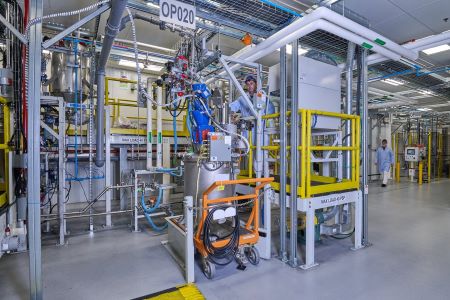
GM-Honda Begin Commercial Production of Hydrogen Fuel Cell System
London, 05 March 2024, (Oilandgaspress): – GM and Honda have started production of hydrogen fuel cell systems at their 50-50 joint venture production facility, Fuel Cell System Manufacturing LLC (FCSM) – the first large-scale manufacturing joint venture to build fuel cells.
The 70,000-square-foot facility has already created 80 jobs, since it was first established in Michigan in January 2017 based on a joint investment of $85 million (€99m/ £72.3m). The world-class hydrogen power solutions being built at FCSM from January will be used by both companies in various product applications and business ventures.
GM and Honda are the first full fuel cell system manufacturing joint venture to begin volume production of fuel cells for transportation and beyond Speaking of the progress, FCSM president Suheb Haq commented: “We begin the process with raw materials for membrane and electrode all the way through completed systems. Ongoing investment and commitment by both companies is driving our success at FCSM. This commitment aligns with our mission of making high quality, durable and affordable hydrogen fuel cell systems for a wide range of applications and customers.”
“We integrated the strengths of Honda and GM to create the most capable production system at this joint venture,” said Tetsuo Suzuki, vice president of FCSM. “We brought a mass production mindset with attention to detail and a focus on high quality, and now we are ready to meet the needs of the customers for the future applications of fuel cell technology and the beginning of the hydrogen era.”
Honda and GM engineers began work in 2013 on the co-development of the next-generation fuel cell system. In addition to advancing performance, the companies have collaborated to double durability compared to the 2019 Honda Clarity Fuel Cell by using corrosion-resistant materials and by improving low-temperature operation.
Together, the two companies also focused on lowering development and manufacturing costs by leveraging economies of scale, advancing the cell design, simplifying supporting auxiliary equipment, utilising common sourcing, and reducing the use of costly precious metals. The new fuel cell systems will therefore be two-thirds less expensive to make than for the 2019 Honda Clarity Fuel Cell.
Significant efforts have also been made at FCSM to ensure the highest levels of quality while improving manufacturing productivity. The venture incorporates many first-of-their-kind methods for automating membrane-electrode-assembly production and fuel cell stack assembly.
The Fuel Cell System is a fundamental part of Honda’s ambitious “Triple Action to Zero” approach toward its global goal of zero environmental impact by 2050 through not only its products, but their entire lifecycle, including corporate activities.
Carbon neutrality for all Honda products and corporate activities by 2050.
Resource circulation – Using 100% sustainable materials to create a circular economy will enable Honda to recycle or reuse all the materials from its vehicles, reprocess them back to raw materials, and reuse those in the creation of new products.
Use of clean, renewable energy, including electrification and hydrogen.
Honda will expand the applications of the new fuel cell system beyond FCEVs to various internal and external applications, thereby serving to stimulate demand for hydrogen and facilitating the carbon neutrality of society through its use.
Information Source: Read full article
Energy Monitors | Electric Power | Natural Gas | Oil | Climate | Renewable | Wind | Transition | LPG | Solar | Electric | Biomass | Sustainability | Oil Price |

